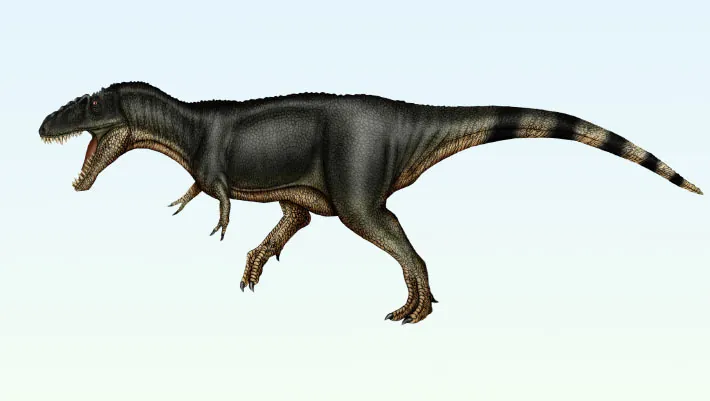
Exciting Discovery: Unveiling Labocania aguillonae, a New Tyrannosaur Species from Ancient Mexico!
2024-09-26
Exciting Discovery: Unveiling Labocania aguillonae, a New Tyrannosaur Species from Ancient Mexico!
Paleontologists have made a thrilling announcement: a new species of tyrannosaurid dinosaur named Labocania aguillonae has been unearthed in Coahuila, Mexico! This remarkable find is based on a partial skeleton discovered in the upper layer of the Cerro del Pueblo Formation, located just 54 km west of Saltillo, and dates back to the Campanian age of the Cretaceous period, a staggering 72.5 million years ago.
Unlike its more formidable relatives, Labocania aguillonae measured approximately 6.3 meters (21 feet) long, making it relatively small in the tyrannosaur lineage. However, don’t let its size fool you—this ancient predator thrived in a vibrant ecosystem where it was an apex predator, dominating the landscape during its time.
Dr. Héctor Rivera-Sylva from the Museo del Desierto and Dr. Nicholas Longrich from the University of Bath explain that during the Cenomanian and Turonian ages, tyrannosaurs were less specialized and scarce. But by the Campanian age, these dinosaurs experienced a significant evolutionary leap, leading to greater diversity and the emergence of larger, well-adapted forms.
The presence of Labocania aguillonae sheds light on the dynamic evolutionary pathways within the tyrannosaur family. Drs. Rivera-Sylva and Longrich noted that while the northern regions of Laramidia were home to daspletosaurins and albertosaurines, southern Laramidia, including Mexico, witnessed the rise of the Labocania clade—a fascinating divergence that indicates rich endemic diversity among carnivorous dinosaurs.
Intriguingly, the fossil's anatomy suggests strong links to other known species such as Labocania anomala, Bistahieversor sealeyi, and Teratophoneus curriei. This connection indicates that the various species inhabited distinct geographic niches, contributing to their unique evolutionary paths. The researchers emphasize that current findings suggest many more undiscovered tyrannosaur species likely inhabit the fossil record, thanks to limited geographical sampling.
The issue of why large dinosaurs exhibit more significant levels of endemism compared to modern mammals remains an intriguing puzzle for scientists. The research highlights that the competition between these species likely played a critical role in enforcing this endemism, creating a complex web of ecological relationships that fostered the diversity of these fascinating creatures.
This groundbreaking discovery has been detailed in a recently published paper in the journal Fossil Studies. As the study of these majestic reptiles continues, we can only wonder what other secrets the fossilized remains of the Earth’s prehistoric inhabitants will reveal in the future! Keep an eye on paleontology, as each find could rewrite what we know about these iconic dinosaurs.


 Brasil (PT)
Brasil (PT)
 Canada (EN)
Canada (EN)
 Chile (ES)
Chile (ES)
 España (ES)
España (ES)
 France (FR)
France (FR)
 Hong Kong (EN)
Hong Kong (EN)
 Italia (IT)
Italia (IT)
 日本 (JA)
日本 (JA)
 Magyarország (HU)
Magyarország (HU)
 Norge (NO)
Norge (NO)
 Polska (PL)
Polska (PL)
 Schweiz (DE)
Schweiz (DE)
 Singapore (EN)
Singapore (EN)
 Sverige (SV)
Sverige (SV)
 Suomi (FI)
Suomi (FI)
 Türkiye (TR)
Türkiye (TR)